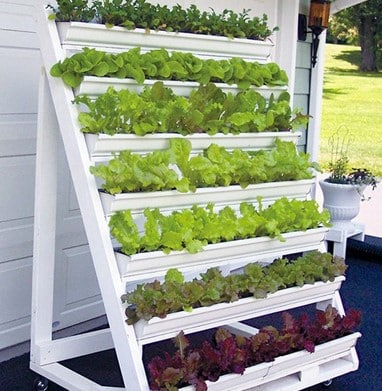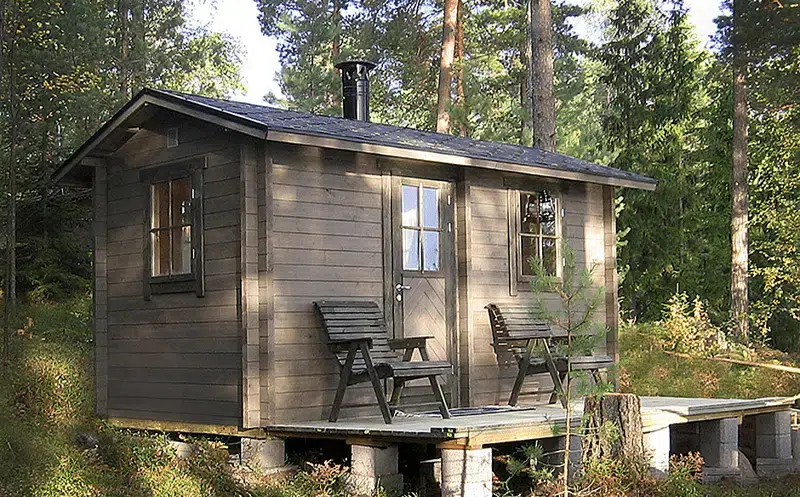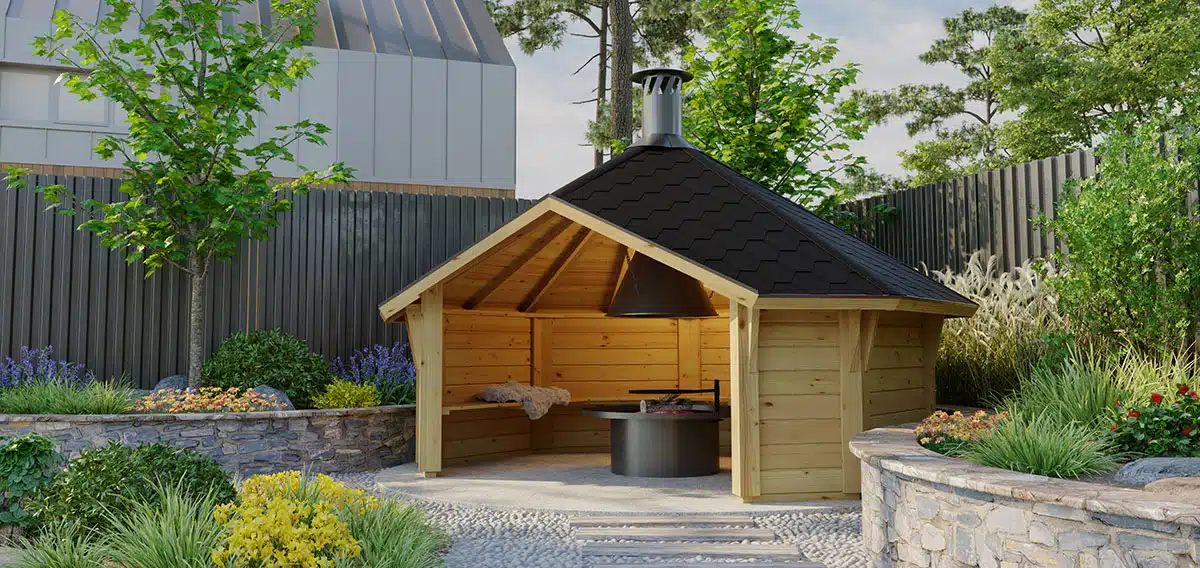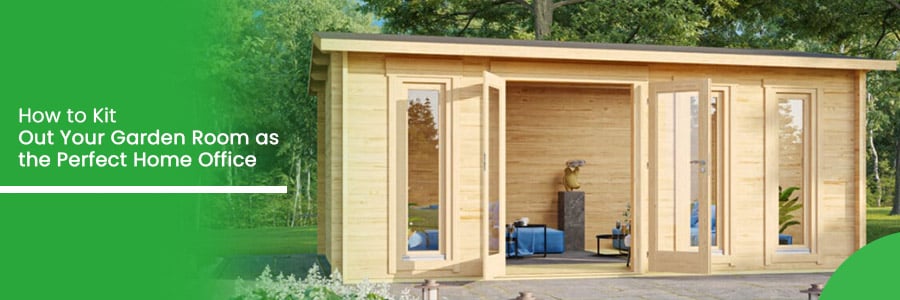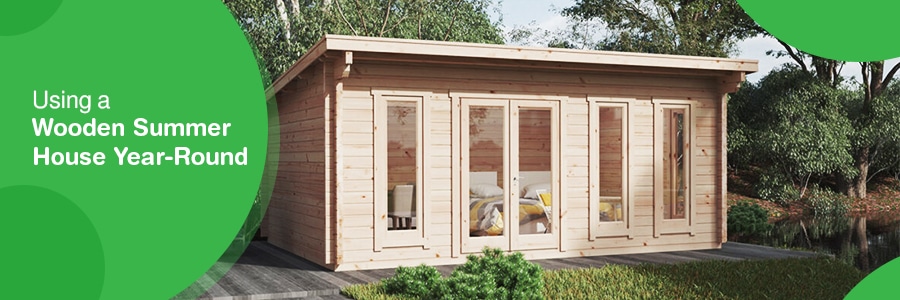How to Create a Vertical Garden at Home
15.04.2021
Whether you have a large backyard or not, having natural green spaces made of plants in your home is not a problem anymore. There are so many ways you can use to have a perfect garden in your backyard or office. You can build garden rooms, or some garden log cabins in which you can grow lots of herbs and have some fun at the same time.However, the lack of space and need for larger green areas, both in our homes and cities, was a starting point for the invention of vertical gardens and incorporation into less usual areas. Vertical gardens have become a trend in interior and exterior design in the past few years, providing people the possibility to cultivate these little urban gardens even in the skyscrapers. If you want to have this kind of greenery in your home, too, here is the ultimate list of tips on how to create a vertical garden at home so you can use all the benefits of their practical purpose.
Why Should You Have Vertical Garden at Your Home?
There are multiple benefits of growing plants and incorporating them into your living space. Many recent research endeavors were focused on scientifically proving the positive effects of having your leafy friends around you. Here is what they found.
Greenery Is a Natural Stress Reliever
According to the Journal of Physiological Anthropology Study, grooming the plants reduces stress and anxiety. Besides, plants have a very beneficial effect on cognitive skills. Recent researchshowed that memory retention could be increased by even 20%, while concentration and productivity can be boosted by 47% if you’re surrounded by plants, which is especially convenient for all those who work remotely.
Greenery is Air Purifier
House plants and vertical gardens can spruce up the air quality and eliminate the pollutants, airborne molds, and bacteria through their leaves and roots. This way, they provide us not only with fresh air but also with an opportunity to fight the negative consequences of air pollution, such as asthma, dry eyes, or headaches.
Vertical Gardens Can Provide you With Organic and Fresh Food.
Tomato, pepper, and basil right from your balcony to your homemade pizza? With vertical gardening, this is a realistic scenario.
Growing vegetables and herbs on your balcony or in the kitchen areas will provide you with fresh, organic food and spices. They give a special taste to your dishes and have a positive effect on your health.
How to Create Your First Vertical Urban Garden?
So, now you know all the advantages of having living walls in your house, let’s see how you can create your first vertical urban garden and become a real pro in producing the ingredients for your home cuisine.
Step 1: Choose the Space Where to Put Vertical Garden
There are many ways how you can create the living walls in your home, and the final look will depend on the space where you want to create it. The kitchen is a great space for having a living wall made of all herbs you could use in your daily cooking routines. It will have a practical and decorative function, so this would be two wins in one.
Still, if there is an option to groom your plants on your balcony, this will be the most practical solution since you’ll have to work with soil and make a pretty mess until everything is done. Furthermore, the balcony is better because the plants will be more exposed to the sun’s light, which is a necessary factor for your gardening endeavors to be successful.
Step 2: Choose the Type of Vertical Garden
There are several ways you can organize your vertical garden, and the decision will depend on the space of the house where you want to put it.
A container-style garden implies that you will use planters attached to the walls, while the herbs will be displayed in rows.
A pocket garden implies you will use a pocket hanging garden wall planter made of canvas or felt which is suitable for small spaces.
Wooden or plastic wall containers are great solutions for balconies since it is space-saving, and includes a drip-irrigation system that conserves water by directing it straight to roots and reducing evaporation.
Step 3: Be Creative!
Using supplies that you already have at home, such as old, unusable ladders, bookshelves, crates, cans, baskets, and even frames can be a great way to recycle them creatively and create a unique looking at your vertical garden.
Step 4: Choose the Type of Plants
Again, the choice of herbs will depend on the space you’ll use to create vertical gardens, the light (you will not plant the same herbs in shady and light places since some plants can not sustain the lack of sun), and your taste, of course. If you want some hardy plants that don’t demand too much attention, choose plants like sempervivum or agave. And if you want some fresh vegetables and spices, then basil, menta, rosemary, cherry tomatoes, even paprika will be the best options to start with.
Step 5: Plant Your Leafy Friends!
Now you made all of those choices, the planting of your herbs can start. Buy the righteous type of soil, compost, and mulch essential for your plants to survive. If you’re not sure what products to choose, consult the gardening company you’re buying your plants from, and don’t forget to ask them for advice on how often you should water them, whether they prefer light or shade, and how big they can grow. Also, don’t forget to get some gardening tools sets, gloves, and a watering can, so you can maintain them properly.
Ready to Become an Urban Gardener?
Gardening, whether done outside or inside your home, has a beneficial impact on your well-being, so it is the perfect hobby for stress relief. And vertical gardening allows you to do it at your home, whenever you want. So, take your gardening tools, and start to plant. Being an urban gardener was never easy and creative to do.
Want to discuss over phone. Let us call back to you
If you need any additional info regarding any product, please fill in the below form and we will get back to you, usually the same or next working day.
Have any questions regarding some product?
If you need any additional info regarding any product, please send us your questions.
